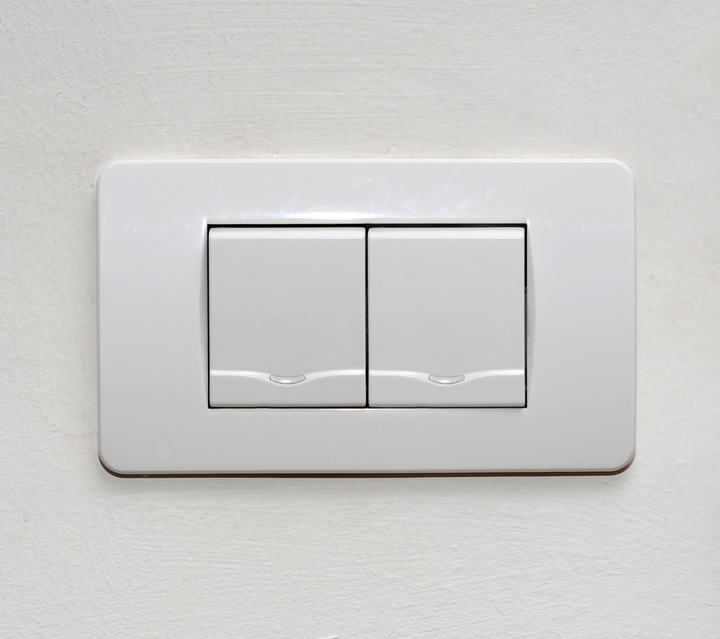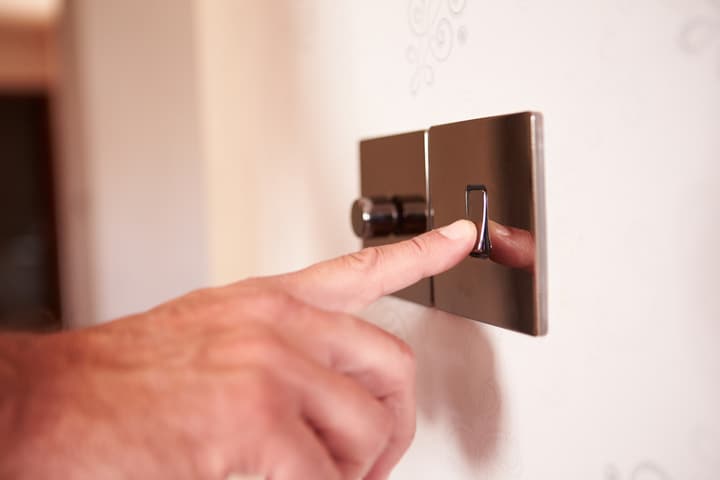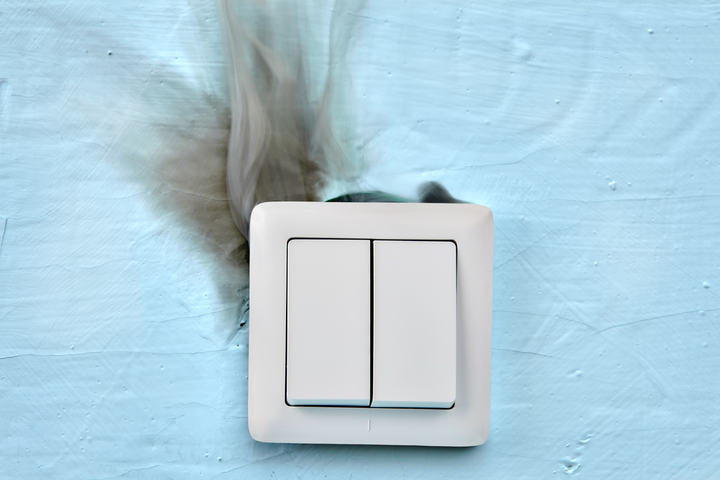Most light switches are designed to work extremely simply. They’re either on, or they’re off.
The switch has connected the circuit when they’re on, allowing current to flow through.
The switch breaks the circuit when they’re off, and no current can travel.
And yet it’s sometimes possible to leave a switch hanging in the middle. So what happens in that instance?
Normally, leaving a switch in the middle does nothing. The internal components will snap past the center, so either the switch is fully open or closed, despite the appearance of the plastic outer. If the switch is damaged, then leaving it in the middle could cause a hazard.
In this article I’m going to go into more detail on:
- What happens when you leave a switch in the middle
- Whether it’s even possible to do so
- If switches left in the middle cause fires
What Happens If You Leave The Switch In The Middle?

Let’s start with a simple point – leaving it in the middle doesn’t do anything with a light switch.
The internal switch is a binary device – it can either be open or closed.
If it’s open, it’s fully open. And if it’s closed, the contacts are touching, and the circuit is complete.
Let’s exclude the obvious correction: there are some light switches with three states, where leaving it ‘in the middle’ is considered off – we’re only talking about standard two-position light switches here.
If the light switch is left in the middle from the exterior then it’ll exist in whatever state it was already in, either on, or off.
Is It Possible To Leave The Switch In The Middle?

Technically you can’t leave a light switch in the middle.
I’ll pause while you no doubt go and try – I’m sure you want to see for yourself.
Suppose you come back thinking you’ve proved me wrong.
In that case, I’ll bet that the switch had some resistance when you tried to leave it in the middle, and it was a fine balancing act to prevent it from snapping back to the state it was already in.
That’s because the internal of a light switch works using a snap-action that’s called hysteresis.
This is where the switch is designed to instantaneously switch at a specific position.
As you start pressing a light switch, you’re moving the internal switch, but the contacts stay completely motionless.
As soon as the switch reaches a certain point, the pressure causes the contact to snap into the second position, completing the circuit.
So you might be able to position the external switch ‘in the middle.’ Still, the components inside won’t have moved until you pass that threshold.
Nothing is happening inside the switch, and so like I said, technically, you can’t leave a light switch in the middle, despite how it might appear.
Except, that’s only true with working light switches in good condition.
While light switches are super-resilient and will last for many years, eventually, they’ll wear out.
If that’s the case, the contacts may not quite snap as they once did, and they could hover a little.
Revise the question to “is it possible for an old light switch to be left in the middle” and the answer becomes “maybe”.
Can Switch Left In The Middle Cause Fire?

If you have an older light switch that’s worn down and getting a little loose or old, it could cause some hazards.
That’s because the contacts may hover just close enough to make a connection, but not a consistent one.
This means that the current will be irregular and may even arc between the contacts.
Arcing current over a while could cause extreme heat and make the light switch set on fire but this is rare. They’re designed to handle current even if it is arcing.
You’ll know if a switch is arcing, if you can see any sparking, and if you hear a buzzing sound.
Turn off the switch if you notice this, and replacing the light switch is the safest thing.
On rare occasions, a light switch does have these problems. However, it’ll more than likely be contained.
Light switches are typically installed in a box that shields the rest of your home from the miniature fire that could break out.
The light bulb may be more of a cause for concern, especially if you’re using older bulbs that can heat up.
Intermittent current could cause the lights to flicker, which is enough of an issue in itself. However, you don’t want flickering lights to cause you problems.
Over time, a flickering light bulb will also generate more heat – they’re designed to work with a constant current.
In theory, the bulb could reach a high enough temperature to become a fire hazard. However, you should have noticed long before that it is possible if the light is flickering so dramatically.
Light switches are cheap and long-lasting.
Even if you don’t see the light bulb flickering or any signs of arcing, replacing it is a cheap, simple, and smart decision if the switch is starting to feel loose.
Final Words
A light switch will normally last you for 20 years or so, and for most of that time, it won’t be possible to leave it in the middle.
But if you notice that it doesn’t seem to have that same satisfying snap action, then it’s likely wearing out.
It’s the same with light switches that aren’t simple two-way toggle switches too.
If you have a three-way switch, then trying to hover a switch between the middle and either up or down will have the same resistance.
With a dimmer, it’s that initial click as it switches on or off that causes the snap. If these ever feel loose, replace your switch. It’s better to do it before it causes problems for your bulbs.
Have you had a problem with the light switch before?

